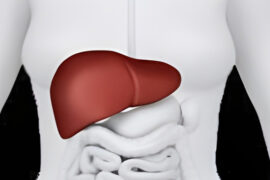The researchers at Washington University in St. Louis have developed a real-time air monitor that can detect different variants of the SARS-CoV-2 virus within about five minutes. This device combines advancements in aerosol sampling technology with an ultrasensitive biosensing technique.
The monitor has significant potential for use in various settings such as hospitals, healthcare facilities, schools, and public places. It not only helps in detecting SARS-CoV-2 but also has the capability to monitor other respiratory virus aerosols like influenza and respiratory syncytial virus (RSV). The researchers claim that this monitor is the most sensitive detector currently available for these purposes. The findings of their work have been published in the journal Nature Communications.
“There is nothing at the moment that tells us how safe a room is,” said John Cirrito, a professor of neurology at Washington University. “If you are in a room with 100 people, you don’t want to find out five days later whether you could be sick or not. The idea with this device is that you can know essentially in real-time, or every 5 minutes if there is a live virus,” Cirrito said.
To develop the detector, the researchers modified a micro-immunoelectron (MIE) biosensor they had previously created for detecting amyloid beta, a biomarker for Alzheimer’s disease. They replaced the antibody that recognized amyloid beta with a nanobody from llamas that recognizes the spike protein of the SARS-CoV-2 virus. This nanobody is small, easily reproducible and modifiable, and cost-effective to produce.
The monitor works by using a wet cyclone sampler, where air enters at high velocities and is mixed with fluid along the walls to create a surface vortex that traps virus aerosols. An automated pump collects the fluid, which is then sent to the biosensor for virus detection using electrochemistry.
“The nanobody-based electrochemical approach is faster at detecting the virus because it doesn’t need a reagent or a lot of processing steps,” said Carla Yuede, an associate professor at Washington University. “SARS-CoV-2 binds to the nanobodies on the surface, and we can induce oxidation of tyrosines on the surface of the virus using a technique called square wave voltammetry to get a measurement of the amount of virus in the sample,” Yuede said. Researchers integrated the biosensor into an air sampler that operates based on wet cyclone technology.
In the testing phase, the monitor was deployed in the apartments of two COVID-positive patients. Air samples were collected from the bedrooms and compared with samples from a virus-free control room using real-time PCR. The device successfully detected RNA of the virus in the air samples from the bedrooms, while no virus was detected in the control air samples.
“The challenge with airborne aerosol detectors is that the level of virus in the indoor air is so diluted that it even pushes toward the limit of detection of polymerase chain reaction (PCR) and is like finding a needle in a haystack,” states Rajan Chakrabarty, a professor at Washington University. “The high virus recovery by the wet cyclone can be attributed to its extremely high flow rate, which allows it to sample a larger volume of air over a 5-minute sample collection compared with commercially available samplers,” Chakrabarty added.
Moreover, in laboratory experiments where SARS-CoV-2 was aerosolized in a chamber simulating a room, the wet cyclone sampler and biosensor were able to detect various concentrations of airborne virus within just a few minutes of sampling.
This development holds great potential for improving surveillance and monitoring efforts for respiratory viruses, including SARS-CoV-2, in indoor environments. It could assist in early detection, prevention, and control measures to mitigate the spread of these viruses.
Disclaimer:
The information contained in this article is for educational and informational purposes only and is not intended as a health advice. We would ask you to consult a qualified professional or medical expert to gain additional knowledge before you choose to consume any product or perform any exercise.








